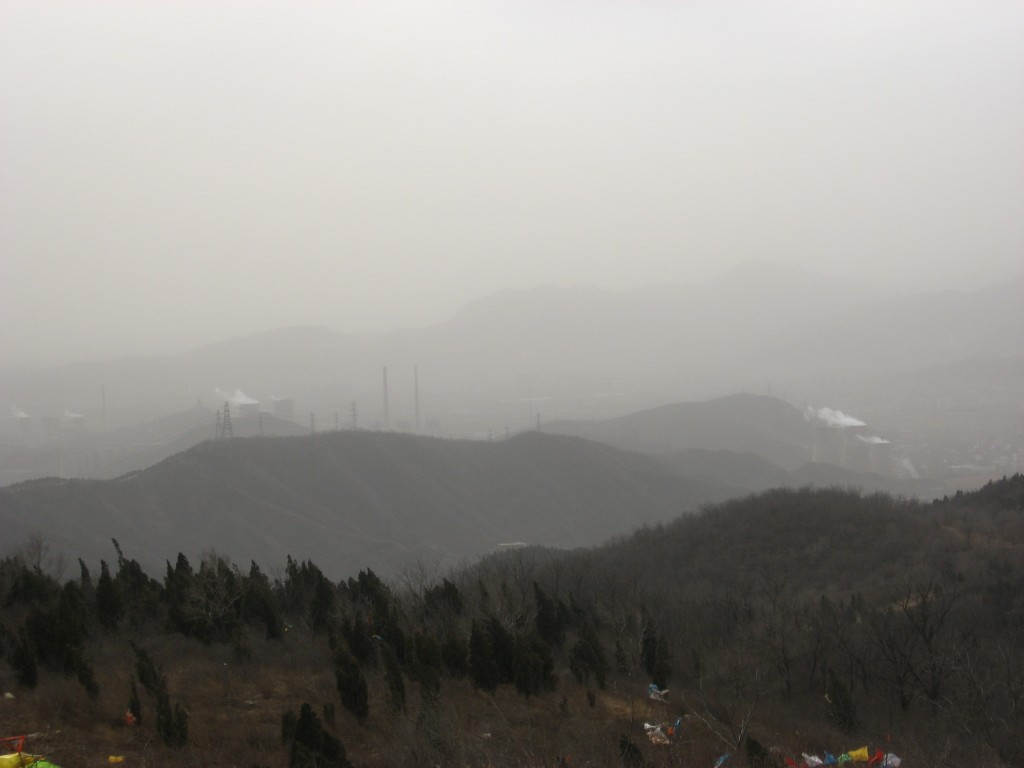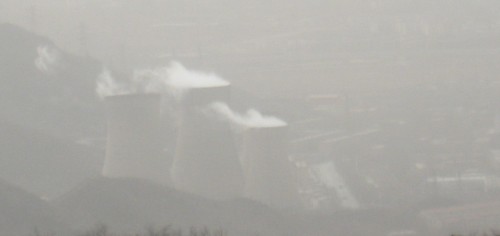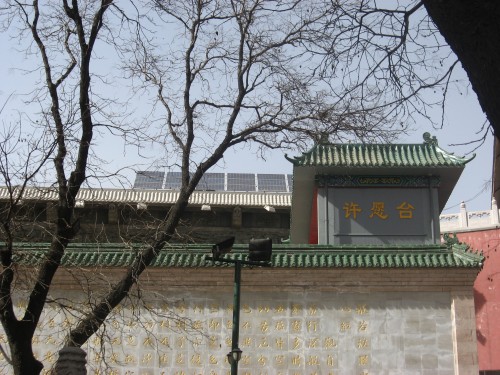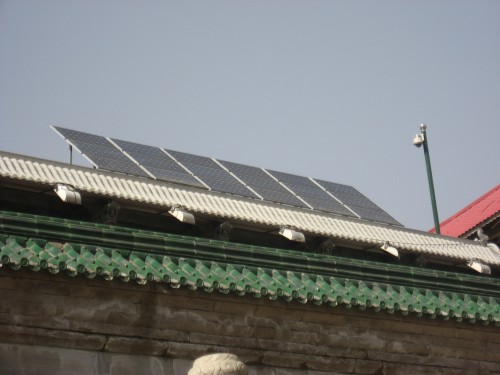Note: Thanks to all who participated in the bio-processor contest. I will spend some time researching all of your leads and announce the winner within 2 weeks.
Last weekend, I went hiking for the first time in Beijing. The trip was organized through a free on-line forum called ç¶ é‡Ž, which literally means “Green Wild”. Unfortunately, the hike was neither green nor wild. The buds of spring have yet to appear in Beijing, and the mountains on which we hiked, though about 30 kilometers (18 miles) from downtown, still put us in view of Beijing’s urban sprawl.
Please note that I am definitely not ragging on Green Wild. The hike was well-organized and I met some interesting people. The existence of groups like Green Wild reflects a growing interest in wilderness appreciation and preservation among professional urban Chinese, and that’s a great thing. I’m sure that I’ll post more about Green Wild activities in the future.
As you may have read in the news, last weekend welcomed the first major sandstorm of the year in Beijing. These sandstorms are a yearly occurrence in northern China, significantly worsening over the past several decades as deforestation and poor land management resulted in rapid desertification. China’s government started tackling this problem in earnest through reforestation and re-introduction of wild grasses and shrubbery about ten years ago, and Beijingers thought that the worst was behind them after the last two years passed with no major sandstorms. There has been progress, but last weekend’s storm showed clearly that the war is not over.
When I woke up on Saturday, the day of the hike, the sky was yellower than my urine after a hard day of digging ditches. I’m now kicking myself for not taking a picture. At the time, I was more concerned that the hike would be canceled. But the Green Wild forum did not announce a cancellation, so I set off into the maelstrom.
Fortunately, the worst was over. Everything was covered in a film of yellow dust, but the air seemed OK, since I could breathe with only slight burning in my lungs and nasal membranes. Especially at the beginning of the hike, there were some dusty gusts of wind that temporarily blinded us and filled our pores and orifices with particulate matter, but it was bearable. After several hours of breathing air that significantly reduced both my sperm count and my life expectancy, we reached the top of the mountain and were treated to this stunning view:
It’s hard to say how much of the haziness was from the sandstorm and how much was pollution from the power plants and factories that crowd the foothills. I count three such facilities in plain view. Here’s a closer view of the cooling towers on the right side of the picture above:
I don’t know much about these plants. I would guess that they are coal burning power plants, and another hiker claimed that one of them was a steel factory. I’ll go out on a limb and guess that these facilities contribute to Beijing’s polluted air.
The hike was not altogether gloomy. By early afternoon, the skies had started to clear and we saw the first rays of sunshine as we descended through the 八大処 (Ba da chu or “eight great sites”), a series of eight Buddhist temples built on the mountainside. At the bottom of the mountain stands a tower that holds a tooth of the Sakyamuni Buddha, the founder of Buddhism. As I was circling the tower, something dark, shiny and somewhat out-of-place caught my eye:
A solar-powered temple!
Here’s another angle:
Although China is already the world’s largest producer of solar panels, 98% of its production is exported, meaning that there is very little domestic demand. However, this is likely to change in the next few years. Last November, China’s government announced the approval of 275 solar projects set to receive a total of just under $3 billion USD in subsidies under its “Golden Sun” program. There are also rumors that China will announce a nationwide feed-in tariff for on-grid solar installations later this year. Such a move could place China on the same path as Germany, which has used feed-in tariffs to dramatically grow its solar power capacity in recent years. Hopefully China will soon announce subsidies making it easier for regular Chinese citizens to follow the lead of these forward-thinking monks!
Though it was not ideal, my first hike in Beijing was still a great experience. Hopefully the next one will be greener, wilder, and not so harmful to my ocular, respiratory and reproductive health.




March 29, 2010 at 06:51
why is the website for ç¶ é‡Ž, http://www.lvye.org? is that how you pronounce ç¶ é‡Ž?
March 30, 2010 at 10:51
In the Romanized system for representing Mandarin pronunciation, one of the vowels is the “u” with the umlaut above it. Since this isn’t easy to type on a regular keyboard, it’s often represented with a “v”.